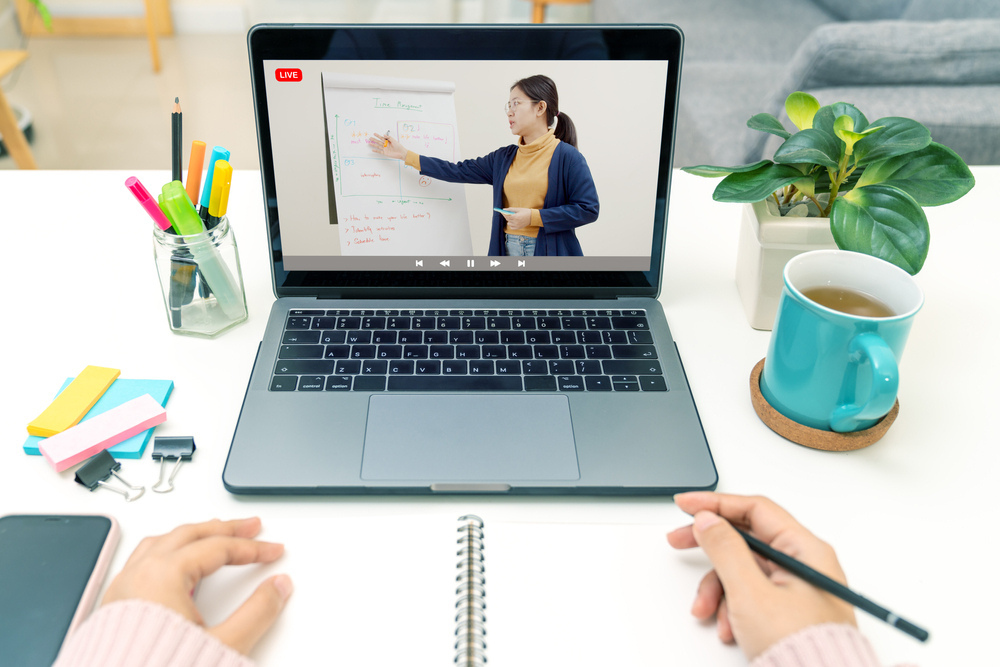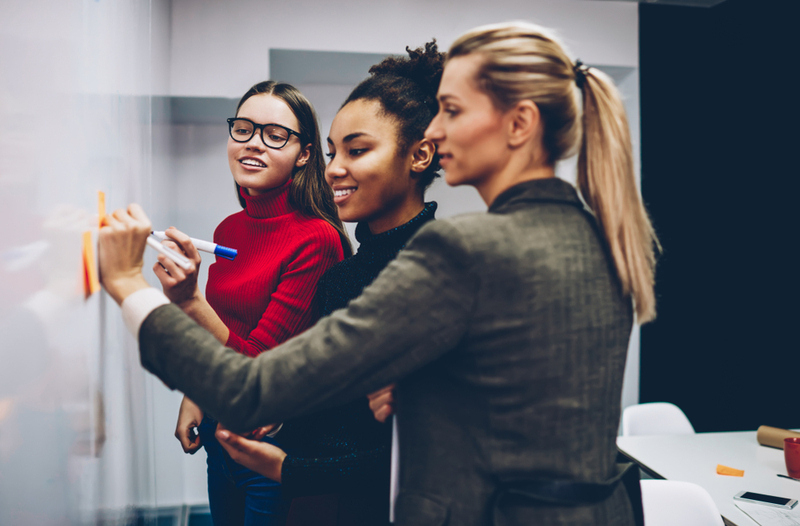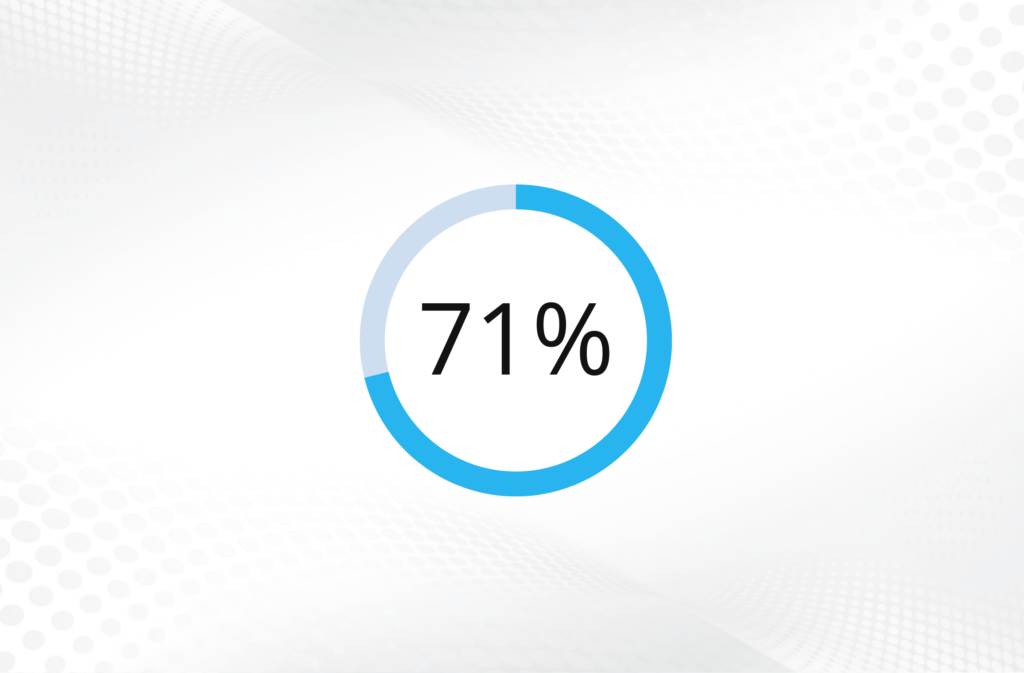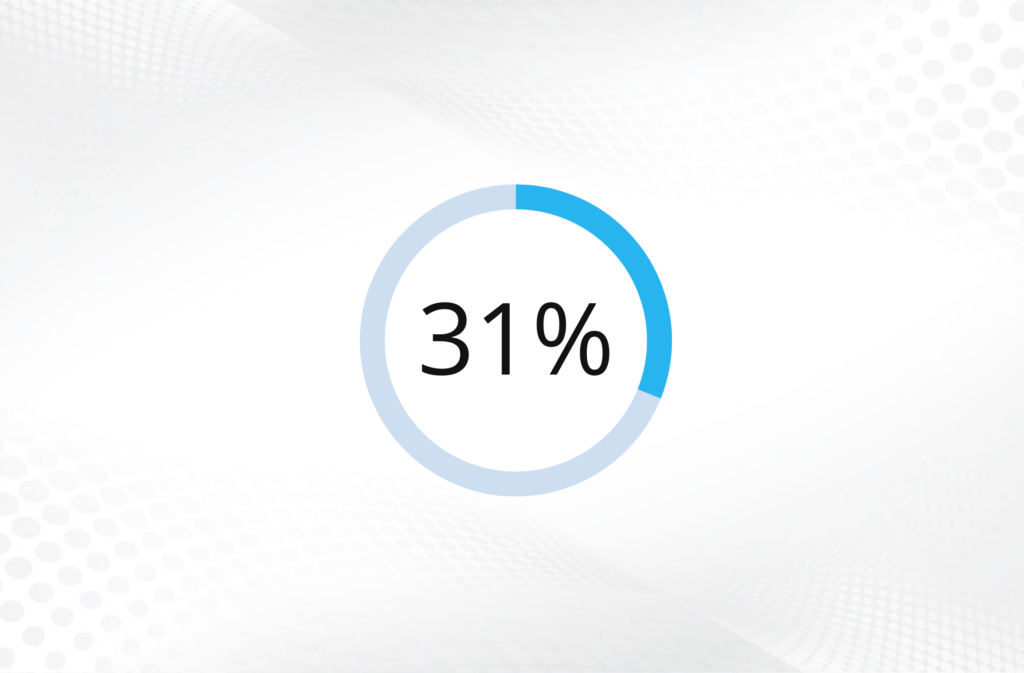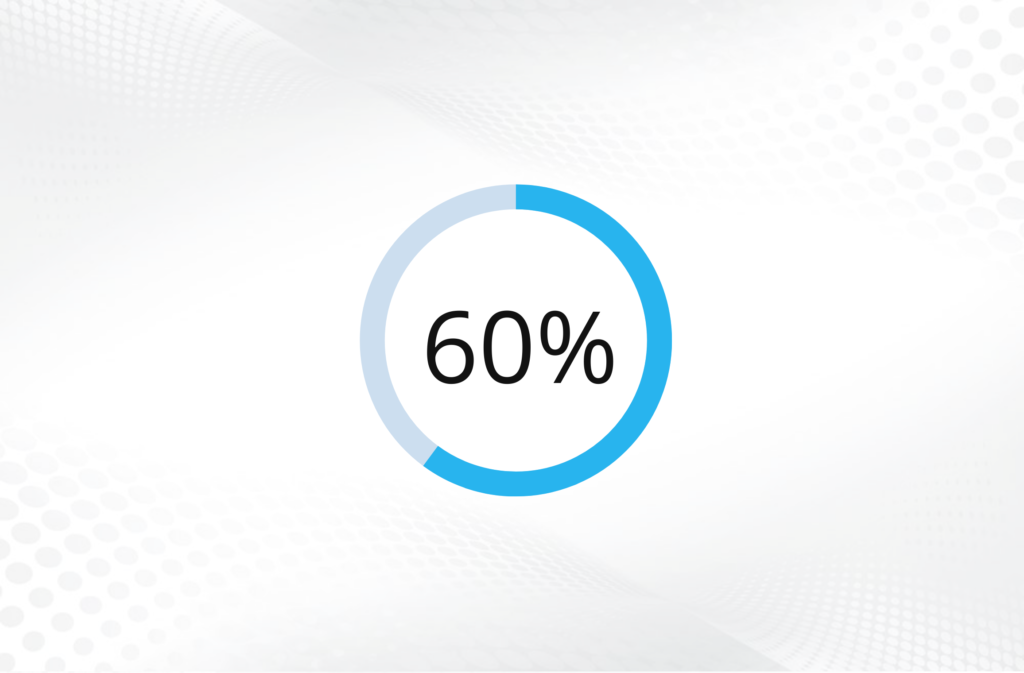Flipped learning
According to the standard definition by the Flipped Learning Network, the leading online community offering support to teachers interested in flipping their classroom, flipped learning is “a pedagogical approach in which instruction moves from the group learning space to the individual learning space, and the resulting group space is transformed into a dynamic, interactive learning environment where the educator guides students as they apply concepts and engage creatively in the subject matter.” The terms flipped learning and flipped classroom are often used interchangeably, but the two do not mean the same thing. While a teacher can flip a classroom and implement methods such as having students read class material at home, this does not necessarily lead to flipped learning. To achieve flipped learning, teachers must first create a flexible environment. The classroom has to be physically flexible and accommodating to students’ individual and group needs. The teacher needs to be flexible about their expectations of the students’ work, as each individual works and learns at their own pace. Furthermore, to encourage flipped learning, teachers must avoid being the ‘sage on the stage’ and allow students to become the focus of classroom activities. Class content is being explored more deeply through group discussions and methods that are personally meaningful to students, rather than using a one-size-fits-all model.
In the flipped learning model, teachers are always concerned about producing and providing learning content that helps students develop conceptual understanding, as well as practical and procedural implications of the concept. Even though the role of the teacher is different to that found in the traditional classroom, they still need to be what the Flipped Learning Network (FLN) calls a ‘professional educator’; meaning, while they might appear less visibly prominent in the classroom, teachers have to be actively observing and helping students in order to provide helpful feedback when needed and point them in the right direction. They are also looking for ways to improve, accepting constructive criticism from their peers, reflecting on their practice, and tolerating controlled chaos in the classroom.
So, why is it called ‘flipped learning’? What exactly is being flipped? To start off, there is something called Bloom’s taxonomy, which is a hierarchical model of learning based on the complexity and specificity levels of learning objectives. In traditional classrooms, Bloom’s taxonomy ranges from the simplest to the most complex learning objective: knowledge, comprehension, application, analysis, synthesis, evaluation. However, a group of education experts revised the taxonomy in 2001 to make it more dynamic (which is reflected in the use of action verbs), and this version is widely accepted now. The revised Bloom’s taxonomy is, starting from the simplest learning objective: remember, understand, apply, analyse, evaluate, create. In traditional classrooms, the lowest objectives of Bloom’s taxonomy were done in school, while students were often left all alone to tackle the more complex forms. The flipped classroom model flips Bloom’s taxonomy by making students go over simple learning objectives at home (such as reading and memorising a text), while they engage in more complex modes of learning in the classroom under the supervision and guidance of a teacher.
Flipped learning is also a relatively recent concept. While some elements of it were thought of and even implemented starting in the 90s, the full theory of the flipped classroom model was proposed by two high school chemistry teachers, Jonathan Bergmann and Aaron Sams, in their book Flip Your Classroom: Reach Every Student in Every Class Every Day (2012). The duo had started recording video lessons in 2007, which they used in their classes as a sort of class preparation material. They credit the authors of the paper entitled Inverting the Classroom, published in 2000, for inspiring them to start experimenting with the idea of an inverted classroom, which soon became the flipped classroom model.
In the book, Bergmann and Sams list a number of reasons why educational institutions should use flipped learning. They write that the system is accommodating to the students as it “speaks their language,” helps those who are struggling in their studies, and allows students of all abilities to excel. It also fosters an environment in which interactions between teachers and students, as well as between students themselves, are increased and favoured, which altogether leads to better mutual understanding in the classroom. Due to its dynamic nature, flipped learning has a positive impact on parents, too, as much of the initial studying is done at home.
Producing intentional content
So, in practical terms, how does flipped learning work? Since the whole system is made to be flexible, inevitably there are variations from case to case, but one key element of all flipped learning models is students learning at home through some form of digital media. This, as seen from its first Bergmann-Sams iteration, is almost always in the form of a video lecture. Teachers have to make a video that sums up and explains all the key elements of a lecture. When doing so, it is recommended that they do not make a video just for the sake of making one, but with the goal of facilitating instructional goals. So, for example, some light English reading might not require a video at all; but a new, complex mathematical concept should be explained through a video that not only focuses on explaining it in one way, but from different perspectives as well. Then again, a teacher might decide to go over a maths problem using just a screencast, while difficult reading could merit a video lecture explaining the context and importance of it. The key here is to always produce intentional content (one of the basic four elements of flipped learning, as defined by the FLN), which reflects the needs of students and achieves instructional goals. The teacher has to carefully plan ahead and decide what students are capable of learning on their own and what must be practically explained, or rather, practiced in class.
Applying new knowledge in a meaningful way
Since the cornerstone of flipped learning is studying at home, teachers need to have an assessment system in check to make sure that the students are understanding the content. This could be something like an online quiz, a worksheet, or notes from the video lesson taken at home. It would be wrong to assume that flipped learning is a form of self-taught instruction where the brunt of the work is done by the students. The opposite is true. Teachers have to work hard to prepare all the content ahead, and once that’s done there are the classroom activities which can differ from subject to subject and from class to class. Once the “at home” part of flipped learning is done, teachers need to devise activities that are not mere retellings of facts memorised at home, but that actually require students to apply new knowledge in a meaningful way. Most often, educators split up students into cooperative or discussion groups, which also necessitates the rearrangement of the traditional classroom seating plan. The goal is to facilitate active learning by engaging students, instead of letting them just listen passively.
Technology plays a big part in flipped learning. In the early days of the flipped classroom model, teachers found it hard to fully implement the concept, as not every student had access to a computer, or the internet. However, nowadays that is practically no longer an issue, as almost everyone has access to a smartphone and the internet, or, at the very least, most schools can afford to lend digital equipment if needed.
Making and sharing interactive videos for lectures
Although it might be preferable that teachers record all the video material for their classes themselves, in reality most teachers use material from their colleagues, or more often, from online course tools. One such platform is Khan Academy, a non-profit educational organisation that offers free online courses, lessons, and videos. There are other open educational resource hosting services, like CK-12 and MERLOT, that also offer video lessons and presentations. Some educators even post their lessons on YouTube, which are all easy to find and use and can be referred to when students need to go over certain topics. But a simple video is often not enough. That is why websites like Nearpod and Playposit offer interactive video lessons, which are three times more effective for studying than normal video. On Playposit, educators can assign videos or bulbs embedded with questions and other interactive prompts. To progress, students need to finish these mini-assignments, which is also a neat way of making sure that they do go over the required material. EdPuzzle has a different way of doing just that; apart from the option to make videos interactive, teachers can use this tool to track how much time students spend watching a particular section of the video. This way, a teacher can glimpse how well the students have grasped a certain concept. BrainPOP is another similar educational site that hosts short animated movies for students in primary and secondary school, and is very popular in the United States.
Other types of software that are useful for teachers in flipped learning are screencasting applications. There is Camtasia, a screen recorder and video editor, whereby teachers can add music and video effects, notes, annotations, and more. Another great tool is a Chrome extension called Screencastify, which can also record audio, and all the recordings are automatically saved in Google Drive. Not all flipped learning media has to be in video format. For example, there are sites like Sheppard Software that host educational games that can make learning both fun and engaging.
There are different ways to implement flipped learning. The most common method refers to the standard inverted classroom method, where students are provided with video content to study at home. During class, students practice the concepts they studied at home in different ways that aim to deepen their understanding. If the teacher only assigns short video lectures as part of other study material, and proceeds with normal lecturing during class time, this can be referred to as a micro flipped classroom. In demonstration-based flipped classrooms, interactive instructional videos are assigned as homework. This is usually used for STEM subjects, as they require precise and careful instruction. Classroom time is used for addressing any concepts that the students have not fully mastered at home. In group-based flipped classrooms, students work together in groups on assignments and explain concepts to each other. Virtual flipped classrooms completely eliminate the classroom component. Students are provided with all the material they need to study on their own. Assignments are collected online and educators are available for one-on-one sessions during office hours. This type of flipped classroom is mostly used at universities.
Flipped learning in maths
The African Journal of Teacher Education published a study that examined the impact of the flipped classroom on the learning outcomes of secondary school students in mathematics in Lagos, Nigeria. Although an internet connection is a given for most flipped learning methods used in the developed world, for developing countries like Nigeria the flipped classroom can work even without relying fully on internet connections. Unlike their American or European counterparts, teachers in Lagos burn their recorded video lectures on CD/DVD and distribute the discs to students to watch at home. The study was examining the post-test and retention performance of mathematics students and it found that students in the flipped classroom had better overall performance compared to those who went through conventional teaching methods. Looking at data, the study concluded “that the post-test score was significantly higher for the flipped classroom group than the conventional classroom counterpart”. It also noted the increase in students’ involvement in the flipped classroom. Finally, the study recommends that Nigerian teachers be provided with training via seminars and workshops to fully master and implement the flipped classroom in their teaching.
Flipped learning is a very versatile teaching method. As part of the larger phenomenon of blended learning, flipped learning can be combined and used with other instructional approaches for better results, as shown by researcher Jeong Ah Kim in her 2020 research. Kim proposed a new method for learning algorithms in which students were to watch video lectures on programming and algorithms outside of class. During class, students would engage in unplugged learning, an instructional method that takes students away from the computer and teaches abstract concepts through objects and sensory approaches. For homework, students would simply have to find applications of algorithms in real life. This flipped-unplugged learning method was found to be more effective than flipped learning on its own, as the students in the experimental group “showed higher outcomes and improvement of self-efficacy is little higher.”
Research on flipped learning has not been too extensive, even if there are many positive articles written about it. Generally, research cannot with certainty confirm that flipped learning is significantly more effective in accomplishing instructional goals as opposed to traditional learning. Teacher trainer, lecturer, and award-winning author Philip Kerr perhaps best summed it up: “Although it appears that most studies point to the benefits of flipped learning, there is usually more enthusiasm than there is empirical evidence.” He notes that there are many variables in research of this kind, and that some of them are nearly impossible to measure; for example, it is hard to empirically measure the extent to which teachers are actually adhering to the principles of flipped learning. However, the studies he looked at do observe some learning gains in students, but Kerr is cautious to note that they may be attributed to active learning (an educational process in which all students are required to engage in the learning process). Active learning is part and parcel of flipped learning, but it can also be implemented in more traditional instructional approaches.
Student perspectives on flipped learning
Since flipped learning is a relatively new concept, some research is oriented towards finding better ways in which it could be used. One such research was done by a group of researchers from the department of English studies at the University of Almeria, Spain. The goal of this 2020 research was to explore student perspectives and acceptance of using flipped learning in two English (as a foreign language) secondary school classes, but with the caveat that the students learn through mobile, rather than stationary, devices. The students, aged 14 to 16, were provided with video content which they could access through YouTube at home. However, to ensure that the students really spent time watching, instead of simply skipping through videos, their watching activity was monitored via the EdPuzzle application. At the beginning of each class, there was a short evaluation to track the students’ progress. During classroom time, students were engaged with task-based learning and collaborative work. The questionnaire that was used to measure student attitudes on the flipped learning model addressed five issues: motivation, effectiveness, engagement, satisfaction, and acceptance of the use of mobile devices in flipped learning. In general, students were positive about the flipped learning methods and outcomes and satisfied with using mobile devices throughout the process. The researchers do caution, however, that some of the students struggled with internet connectivity. They also highlight the importance of having an appropriate video design if flipped learning through mobile devices is to be used.
As indicated above, one of the main challenges of the flipped learning model has to do with access to technology. In order to have continuous instruction at home through video content, students need uninterrupted internet connections and strong enough devices to support interactive material. Moreover, teachers need to dedicate a lot of their time to mastering the software they need for recording concise, engaging, and interesting video lectures. Obviously, simply pressing the play button and recording a ten-minute lecture is not a good option, as the flipped learning model prefers a more interactive approach, with pop-up questions and prompts during the video lesson. There is also the issue of teachers being overworked, especially in the initial phases of adopting flipped learning. Everything from recording and preparing all of the material, to carefully planning each lesson and being electronically available to their students at all times, can get tiring quickly. This is why some teachers chose to team up and work together, dividing tasks between themselves.
Cooperation between teachers, students, and parents is key to flipped learning
Another potentially big problem with flipped learning is the non-completion of assigned work. After all, the ability to procrastinate at home is much greater than in the classroom, and there are estimates that up to 20 per cent of students do not finish their flipped learning assignments. This has a domino effect on the class as a whole, because the quality of group discussion will inevitably decrease as a result. This issue is closely related to the issue of self-regulation. Young adults, and especially younger students, cannot be expected to have a high enough degree of self-awareness required to carry out learning and mastering of a subject completely on their own. This is why the active cooperation of parents or carers is dearly needed, but not every household can afford to do so. Finally, some students shy away from the flipped learning model, as it requires them to be consistently active, rather than cram their studying a day or two before the exam.
Overall, teacher responses to flipped learning have been positive. The model itself is adaptable and some elements of it, like the flipped classroom or peer instruction, can be regularly used in everyday, traditional teaching. Obviously, the flipped learning model favours the use of technology, and educational institutions have to keep this in mind with students who might not have access to it. Even if the research on flipped learning is yet to be empirically substantiated, the thinking behind it can be said to be relevant to new generations. Most teachers nowadays employ some form of blended or flipped learning anyway, striving to make their students active, rather than passive, learners. And it is this component, the ‘active’ part of it, which promises that flipped learning will be an integral part of education for a long time to come.
